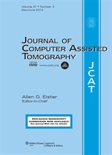
JOURNAL OF COMPUTER ASSISTED TOMOGRAPHY
Scope & Guideline
Transforming Imaging Sciences for Tomorrow's Challenges
Introduction
Aims and Scopes
- Advancement of Imaging Techniques:
The journal focuses on the development and refinement of various imaging modalities, including computed tomography (CT), magnetic resonance imaging (MRI), and hybrid imaging technologies, aiming to improve diagnostic capabilities. - Application of Artificial Intelligence:
A significant emphasis is placed on the use of artificial intelligence and machine learning in imaging analysis, including predictive modeling, automated detection, and enhancement of image quality. - Radiomics and Quantitative Imaging:
The journal promotes research in radiomics, which involves extracting large amounts of features from medical images using data-characterization algorithms, to aid in prognosis and treatment decision-making. - Clinical Applications in Oncology and Other Specialties:
A core area of interest is the application of imaging technologies in oncology, neurology, cardiology, and other medical fields, addressing both diagnostic and therapeutic implications. - Interdisciplinary Collaboration:
The journal encourages collaboration across disciplines, integrating insights from radiology, oncology, pathology, and computational sciences to foster comprehensive approaches to patient care.
Trending and Emerging
- Artificial Intelligence and Machine Learning:
There is a significant trend towards the use of AI and machine learning in imaging analysis, with a focus on enhancing diagnostic accuracy, automating processes, and improving image interpretation. - Radiomics and Predictive Modeling:
Emerging research in radiomics is gaining momentum, emphasizing the extraction and analysis of quantitative features from medical images to improve prognostic predictions and treatment planning. - Hybrid Imaging Techniques:
The incorporation of hybrid imaging modalities that combine different imaging technologies (e.g., PET/CT, SPECT/CT) is increasingly prevalent, highlighting the journal's focus on comprehensive diagnostic approaches. - Patient-Centric Imaging Approaches:
Research is increasingly focusing on patient-specific imaging protocols, including personalized imaging strategies that consider individual patient characteristics and conditions. - Technological Innovations in Imaging:
There is a notable interest in novel imaging technologies and methodologies, such as photon-counting CT and advanced imaging reconstruction techniques, reflecting the journal's commitment to cutting-edge research.
Declining or Waning
- Traditional Imaging Techniques:
There is a noticeable decline in publications focused solely on traditional imaging techniques without the incorporation of advanced technologies or methodologies, indicating a shift towards more innovative approaches. - Basic Imaging Protocols:
Studies centered around basic imaging protocols and methodologies are becoming less frequent, as there is a growing preference for research that integrates advanced imaging techniques and artificial intelligence. - Non-Diagnostic Imaging Studies:
Papers that do not contribute directly to diagnostic improvements or clinical outcomes are less common, reflecting a trend towards research with practical implications and clinical relevance.
Similar Journals

INTERNATIONAL JOURNAL OF CARDIOVASCULAR IMAGING
Advancing the Frontiers of Cardiovascular ImagingINTERNATIONAL JOURNAL OF CARDIOVASCULAR IMAGING, published by Springer, is a prestigious platform dedicated to the interdisciplinary field of cardiovascular medicine and imaging. With an ISSN of 1569-5794 and E-ISSN 1875-8312, the journal is recognized in both Cardiology and Cardiovascular Medicine (Rank #154/387, Q2 Category) and Radiology, Nuclear Medicine and Imaging (Rank #137/333, Q2 Category) disciplines, reflecting its significant impact within the scientific community. Established in 1988 and continuing to the present, it provides a rigorous forum for cutting-edge research, reviews, and clinical insights that are essential for advancing knowledge in cardiovascular diagnostics and therapeutic imaging. The journal's dual access options cater to both traditional and open-access readership, ensuring wide dissemination of its findings. In an era where cardiovascular diseases pose a significant public health challenge, the INTERNATIONAL JOURNAL OF CARDIOVASCULAR IMAGING stands out as an essential resource for researchers, healthcare professionals, and scholars aiming to innovate and improve patient outcomes through imaging technology.

MAGNETIC RESONANCE MATERIALS IN PHYSICS BIOLOGY AND MEDICINE
Exploring the Nexus of Physics, Biology, and Medical ImagingMAGNETIC RESONANCE MATERIALS IN PHYSICS BIOLOGY AND MEDICINE, published by SPRINGER, is a premier academic journal dedicated to advancing the fields of biophysics, radiology, and medical imaging. With a strong presence in Germany and an international readership, this journal has established itself as a vital resource for researchers and professionals engaged in the interdisciplinary study of magnetic resonance applications. Featuring a commendable 2023 impact factor and categorized in Q2 quartiles across several domains—including Biophysics and Radiological Technologies—this journal provides a platform for innovative research and practical implementations in the field. Although it does not follow an Open Access model, it offers extensive archives dating back to 1984, affirming its long-standing commitment to scholarly excellence. The journal not only ranks impressively within Scopus metrics, but it also promotes ongoing discourse that bridges gaps between physics, biology, and medicine, making it an essential read for professionals and students aiming to stay informed about cutting-edge developments.
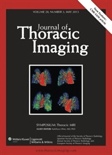
JOURNAL OF THORACIC IMAGING
Exploring New Frontiers in Pulmonary ImagingThe JOURNAL OF THORACIC IMAGING, published by Lippincott Williams & Wilkins, stands as a pivotal resource in the fields of Pulmonary and Respiratory Medicine as well as Radiology, Nuclear Medicine, and Imaging. With the ISSN 0883-5993 and E-ISSN 1536-0237, this esteemed journal has been providing critical insights and advancements since its inception in 1985, contributing significantly to the ongoing dialogue and research within these disciplines. The journal maintains a commendable position, ranking in the Q2 category in both relevant fields and achieving an impressive Scopus ranking of #46 out of 333 in Radiology and #30 out of 155 in Pulmonary Medicine, showcasing its influence and impact (with particles in the 86th and 80th percentiles, respectively). While the journal is not open access, it continues to disseminate high-quality research that informs clinical best practices and emerging technologies in thoracic imaging. As a leading publication, it serves as an essential tool for researchers, clinicians, and students seeking to stay at the forefront of thoracic health innovations.
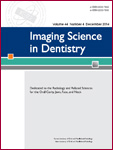
Imaging Science in Dentistry
Leading the way in open-access dental imaging research.Imaging Science in Dentistry is a premier open-access journal published by the Korean Academy of Oral & Maxillofacial Radiology, dedicated to the cutting-edge field of dental imaging and radiology. Since its inception in 2011, the journal has played a pivotal role in disseminating crucial research that advances our understanding of imaging techniques in dentistry, imaging-based diagnostics, and treatment planning. With an impressive Q2 ranking in various fields, including Dentistry (Miscellaneous), Radiological and Ultrasound Technology, and Radiology, Nuclear Medicine, and Imaging as of 2023, it is recognized for its contribution to the academic community, attracting a diverse readership that encompasses researchers, clinicians, and students. The journal provides a platform for sharing innovative methodologies, clinical studies, and reviews that shape current practices in dental imaging while promoting open access to enhance knowledge sharing globally. Through its rigorous peer-review process and commitment to high-quality publications, Imaging Science in Dentistry continues to set a standard for excellence in imaging sciences in the dental profession.

European Journal of Hybrid Imaging
Transforming Knowledge into Practice in Hybrid ImagingEuropean Journal of Hybrid Imaging, published by SpringerNature, stands as a pivotal platform for scholarly discourse in the rapidly evolving fields of hybrid imaging technologies and methodologies. Since its inception in 2017, this open access journal has significantly contributed to the interdisciplinary interface of biophysics, computer science, molecular medicine, and radiology. With its current standing in the Q2 and Q3 quartiles across various categories, it provides valuable insights and research outputs pertinent to both academic and clinical practitioners. The journal's rigorous peer-review process ensures the highest standards of scholarly integrity, while its open access format promotes global accessibility and encourages collaborative research efforts. Covering a diverse range of topics pertinent to hybrid imaging, the journal serves as an essential resource for researchers, professionals, and students alike, fostering innovation and knowledge exchange within the scientific community.
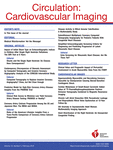
Circulation-Cardiovascular Imaging
Unveiling groundbreaking methodologies in cardiovascular imaging.Circulation-Cardiovascular Imaging is a prestigious journal published by LIPPINCOTT WILLIAMS & WILKINS, dedicated to advancing the field of cardiovascular imaging through high-quality research and review articles. With an impact factor placing it in the Q1 category across key areas including Cardiology and Cardiovascular Medicine, Medicine (miscellaneous), and Radiology, Nuclear Medicine and Imaging, this journal fosters scholarly communication among leading experts and emerging researchers. Established in 2008, it has rapidly become an essential resource for academics and professionals, given its commitment to disseminating groundbreaking findings and methodologies that influence clinical practices and patient outcomes. Circulation-Cardiovascular Imaging is designed to engage a wide audience, from seasoned practitioners to students keen on exploring the nexus of cardiology and innovative imaging techniques. Its significant visibility in the medical literature underscores its role as a cornerstone in the evolution of cardiovascular diagnostics and patient care.

Insights into Imaging
Elevating Standards in Radiology and Nuclear MedicineInsights into Imaging is a prominent open-access journal published by SPRINGER WIEN, specializing in the dynamic fields of radiology, nuclear medicine, and imaging, with its ISSN 1869-4101. Established in 2012, the journal has established itself as a leading platform for disseminating high-quality research and innovative findings, currently holding a prestigious Q1 ranking in its category as of 2023. With an impressive Scopus rank of #42 out of 333 in the medicine discipline, the journal is positioned in the 87th percentile, reflecting its significance and influence in the academic community. Based in Germany, Insights into Imaging not only provides unrestricted access to research but also aims to bridge the gap between scientific inquiry and clinical application, making it an essential resource for researchers, professionals, and students engaged in advancing imaging technologies and practices. The journal’s commitment to fostering knowledge exchange ensures that it remains a critical contributor to the evolving landscape of medical imaging, with articles available from 2012 through 2024.
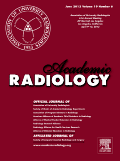
ACADEMIC RADIOLOGY
Leading the Charge in Imaging ExcellenceACADEMIC RADIOLOGY, published by Elsevier Science Inc, is a premier journal in the field of radiology, nuclear medicine, and imaging. With an ISSN of 1076-6332 and an E-ISSN of 1878-4046, this journal has established itself as a vital resource since its inception in 1994, featuring high-quality research that continuously shapes the landscape of medical imaging. Ranking in the top quartile (Q1) for its category in 2023, ACADEMIC RADIOLOGY boasts an impressive Scopus ranking of #38 out of 333, positioning it in the 88th percentile among peers. This journal is dedicated to advancing knowledge through original research articles, review papers, and case reports that highlight innovative techniques and technologies in radiology. Although it does not offer open access, it remains a go-to publication for professionals and students seeking to stay abreast of the latest developments and best practices in the field, ensuring that its contributors and readers are at the forefront of radiological science.

Tomography
Advancing medical imaging through innovative research.Tomography is an esteemed peer-reviewed journal published by MDPI, focusing on a broad spectrum of topics related to medical imaging and diagnostics. Launched in 2015, this Open Access journal serves as a vital platform for researchers, professionals, and students in the fields of medicine, radiology, nuclear medicine, and imaging. With an impressive impact factor reflecting its relevance, the journal has achieved a quartile ranking of Q2 in both Medicine (Miscellaneous) and Radiology, Nuclear Medicine, and Imaging as of 2023. Renowned for disseminating high-quality research, Tomography welcomes original research articles, reviews, and technical notes, fostering innovation and collaboration within the scientific community. Housed in Basel, Switzerland, the journal aims to bridge the gap between fundamental research and clinical application, appealing to a diverse readership eager to advance the field of medical imaging.

European Radiology Experimental
Transforming Insights into Impactful Radiological PracticesEuropean Radiology Experimental is a premier open-access journal published by Springer Wien, dedicated to advancing the field of radiology through innovative research and experimentation. Since its establishment in 2017, the journal has quickly gained recognition, evidenced by its impressive Q1 ranking in the Radiology, Nuclear Medicine and Imaging category, and its placement within the top 83rd percentile of the Scopus rankings. Based in the United Kingdom, this journal aims to bridge the gap between clinical practice and cutting-edge research, providing a platform for rigorous peer-reviewed articles that explore new methodologies, technologies, and insights in radiological sciences. With a commitment to open access, European Radiology Experimental ensures that its content is readily accessible to a global audience, supporting the dissemination of knowledge and fostering collaborations among researchers, professionals, and students in the medical imaging community. As it progresses through its convergence years, the journal continues to play a vital role in shaping the future of radiological research and practice.